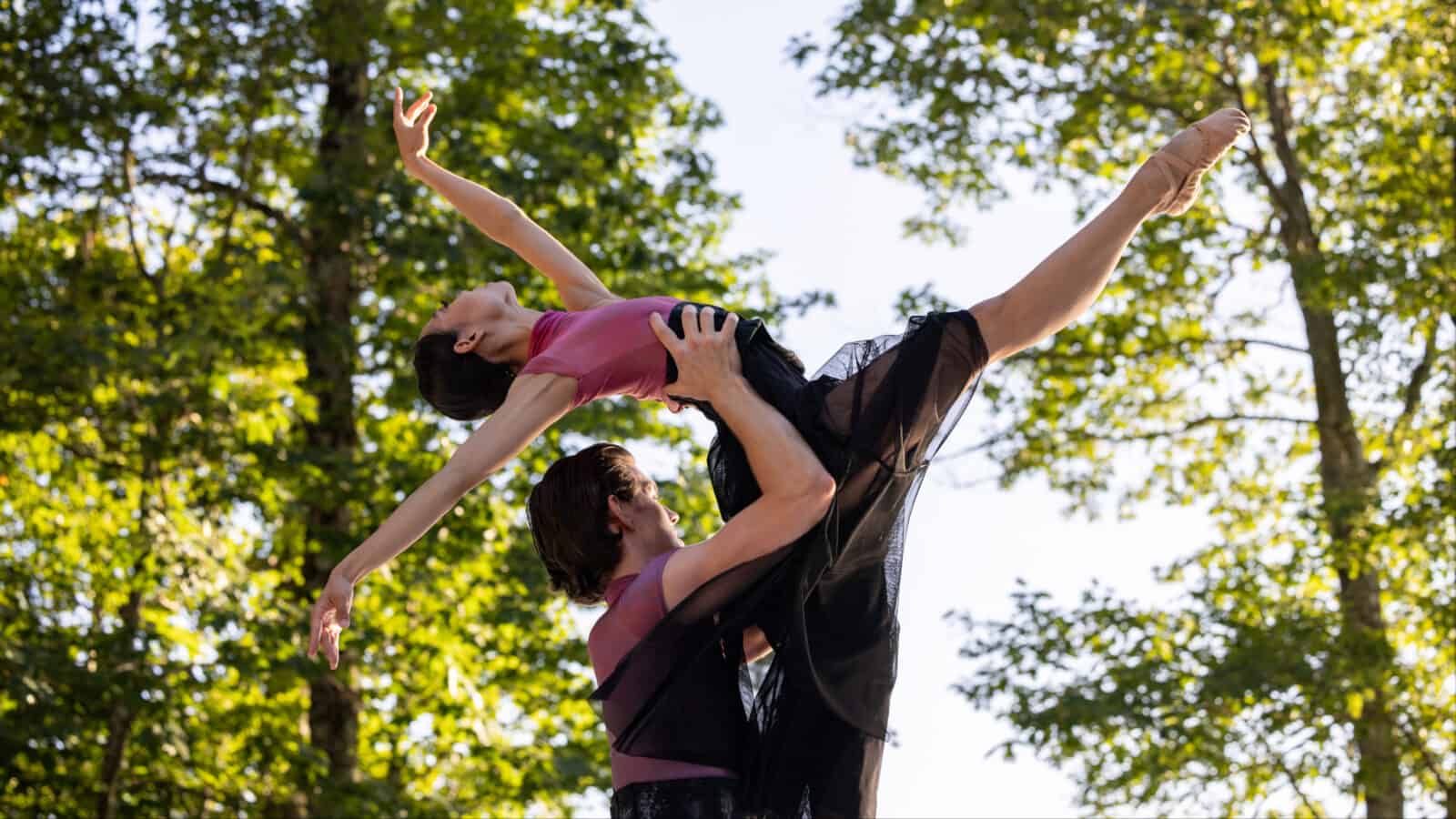They torque around each other, balance and test their weight against the sky. In the late afternoon, half an hour to sunset, they are dancing almost in silhouette and edged in sunlight. A glow outlines an arm, a foot extended above a shoulder.
They shift from solo into company, two and then four and then flocking together, and when the whole corps join to hold a dancer upward, she raises her arms as though she is moving into the lift of the trees.
Tulsa Ballet is dancing on the Leir Stage in the last week of this summer’s festival at Jacob’s Pillow.
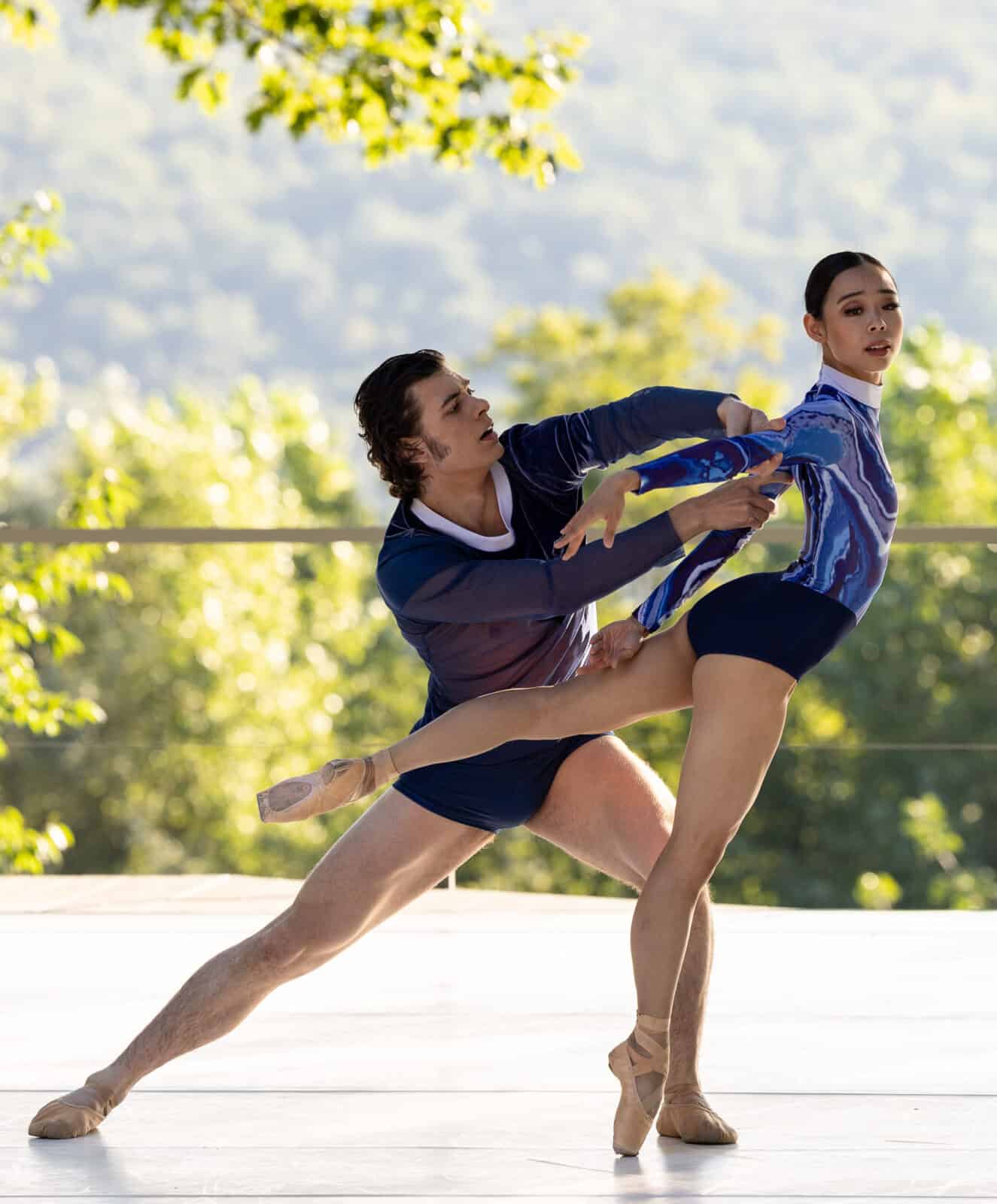
Dancers with the Tulsa Ballet perform on the outdoor stage at Jacob's Pillow. Press photo courtesy of Jacob's Pillow Dance Festival
They are the first company from Oklahoma ever to perform at the Pillow, says artistic director Pamela Tatge, and at the same time they have a connection here going back more than 50 years. The company’s founder, Moscelyne Larkin, performed on the Pillow stage in 1955 with the Ballet Russe de Monte Carlo.
Her story here runs deeper. At central times in her career, Larkin knew and performed with the Five Moons, five Indigenous ballet dancers, all from Oklahoma, who won acclaim around the world — Myra Yvonne Chouteau, Rosella Hightower and sisters Maria Tallchief and Marjorie Tallchief.
Among them they held professional and personal relationships at the heart of international ballet, from George Balanchine to Radio City Music Hall, and all of them have connections here.
Larkin learned first from her mother, Russian dancer Eva Matlagova-Larkin, and she would meet her husband, Roman Jasinski, on tour with Ballet Russe, which she had joined by the time she was 15. Her father was a member of the Shawnee-Peoria Nation. Like her, Tulsa Ballet has performed around the world and grown deep roots at home.
On this late summer day they are leaping high, more than lifting each other, launching and turning into the air. They open with Andrew McNicol’s Celestial Bodies (2022), vivid in blue. He sees the sapphire as a symbol of aspiration in ancient worlds.
And the dancers are reaching upward, in movements now optimistic and connected, and now distant and disparate. They grow their energy and conserve it. Two are holding the stage and then many on stage together, and women are initiating movement, partners leaning back to take each other’s weight and holding their arms to the sky.
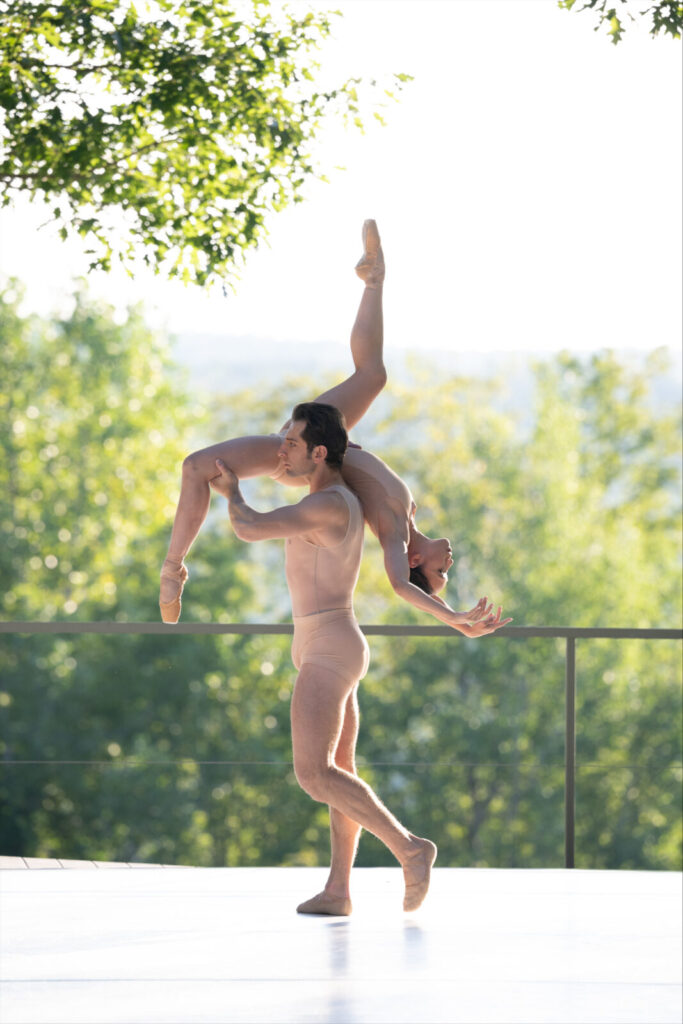
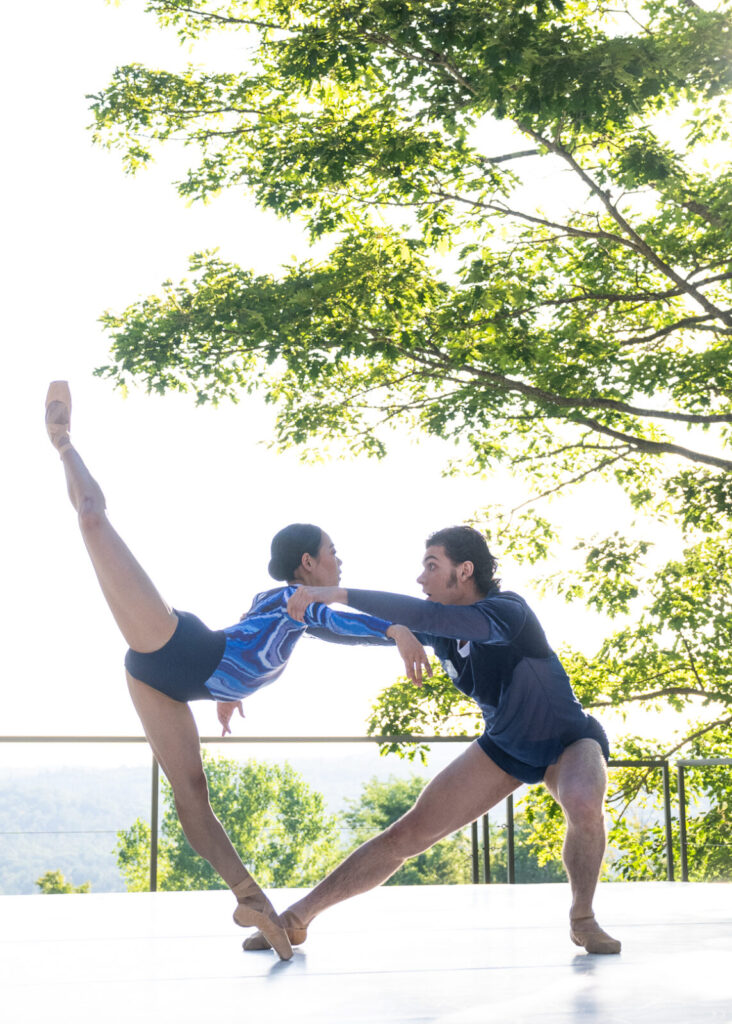
They are moving to a music of chords, not rhythm, and names that sound like stories from Ursula LeGuin, Gemini in the Solar Wind, Mothership. Grammy winning composer Mason Bates is known for a melding of symphonic and electronic sound. He won his 2019 Grammy for his opera on the life of Steve Jobs — a tragedy of technology and miscommunication.
That kind of tension seems to rise here in the the static of an old radio and a voice from Nasa counting down to liftoff. The movement can feel weightless, a dancer rippling her whole body like a lunar landing, held by dozens of hands.
But out here the dancers have the sky — and more around them than an emptiness of space. They are dancing with the mountains on the horizon and the wind in the leaves. The final movement converges with a beat and a melody and the whole company is lifting at once.
The work holds in moments a sense of connection that carries through their contemporary work. From this wide ensemble they move fluidly into Katarzyna Kozielska’s Pas de Deux from Ode (2021), muscular, constrained and cathartic. She wants to hold in movement, she says, the loneliness and closeness, she says, of the pandemic.

Dancers with the Tulsa Ballet perform on the outdoor stage at Jacob's Pillow. Press photo courtesy of Jacob's Pillow Dance Festival
She has translated a duet into a wide range of expression and movement on both sides. Regina Montgomery and Arman Zazyan can flail and push each other away, hold each other poised, move through anger and pain and catch each other before they fall.
That reciprocity runs like a theme in choreography that so often works in pairs and needs both players to give their full attention — the dancers have and give a sense of care. They make sure of each other, in constant quiet movements of independence and respect. I’ll carry my weight. I’ll catch you. You can run into my arms and I won’t let you fall.
That reciprocity runs like a theme in choreography that so often works in pairs and needs both players to give their full attention — the dancers have and give a sense of care.
A company of a dozen come together in the final work, Nicolo Fonte’s Divenire (2022), all of them in rippling cloth that moves like shadow until the light shines through it and brings out warm shades of red.
The name means ‘to become’ in Italian, and Fonte has chosen the music of Ludovico Einaudi, an international pianist from Turin and Milan with a reach around the world and a body of work that suggests infinite curiosity, with inspirations and collaborations from kora master Ballaké Sissoko to Virginia Woolf. (He also knows these hills, as a scholar at the Tanglewood Music Festival in 1982.)
In his clear melody lines, Fonte’s work moves outward with a sense of breadth, like clear air. He wants to create the intoxicating sensation, he says, of feeling involved in “a physical activity … in contact with powerful natural forces … the energy and quiet reflection needed to become more than what we perceive.”

Dancers with the Tulsa Ballet perform on the outdoor stage at Jacob's Pillow. Press photo courtesy of Jacob's Pillow Dance Festival
The balance moves easily in who grounds their weight in the earth and who moves toward the sky, who begins a movement and who ends. Men spring high together and two women join in a rare duet, the first I’ve seen in ballet on the Pillow stages this summer. Jun Masuda opens his arms and holds the stage in his hands.
Now the dancers are airborne — some of the highest and most beautiful leaping variations of any company this summer — not to escape the earth but in the force of their connection with the life around them. They are joined in a current of elation and creation.
That knowledge feels woven into the company’s roots. Larkin and her husband returned to Oklahoma when their son was born and founded the Tulsa Ballet in 1957, says Theresa Ruth Howard, dancer, journalist and founder of MoBBallet, offering her thoughts as a Pillow scholar.
‘… a physical activity … in contact with powerful natural forces … the energy and quiet reflection needed to become more than what we perceive.’ — Choreographer Nicolo Fonte
In 1967, the Tulsa company revived a festival of Indigenous Ballet with four of the five moons, and with representation from their nations. They reached here toward the Indigenous art and culture and communities of their people. They performed to music composed by Cherokee-Quapaw composer Louis Ballard Sr. for orchestra with Native flute and drum. Chouteau performed in dance a story of the Trail of Tears.
Through their first 20 years, Howard says, Larkin and Jasinksi worked with local communities and schools, bringing young people ways into the arts, and caring for their health, and they formed the first ballet class for boys west of the Mississippi.
Their work recalls the spirit of Mar Parilla and her Boston Company Danza Organica on this stage a week ago, performing a new work they have created in close collaboration with members of the Wampanoag, elders and children and people in their strength today, rippling their bodies in their own deep blue, in a heartbeat of the ocean.
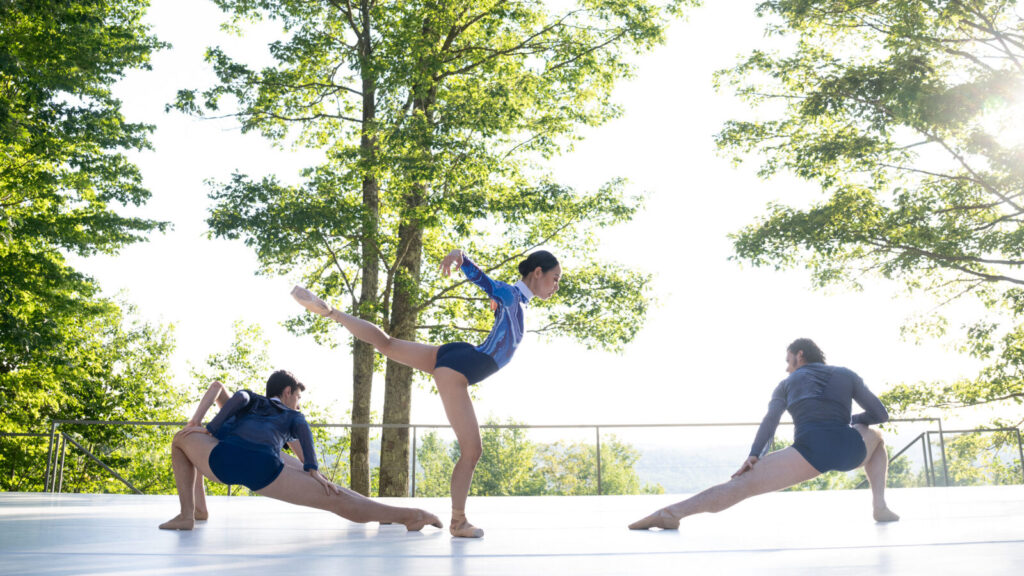
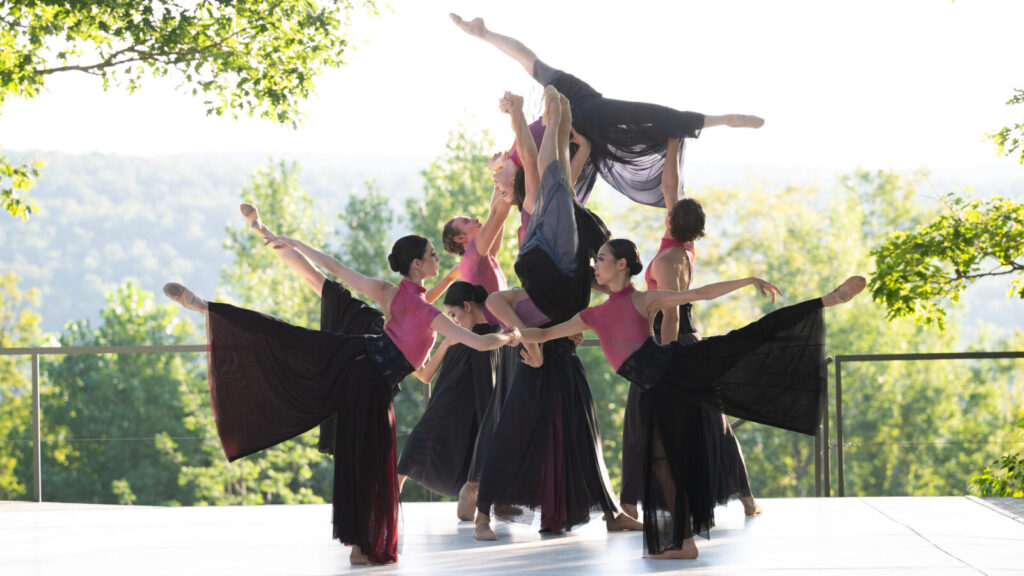
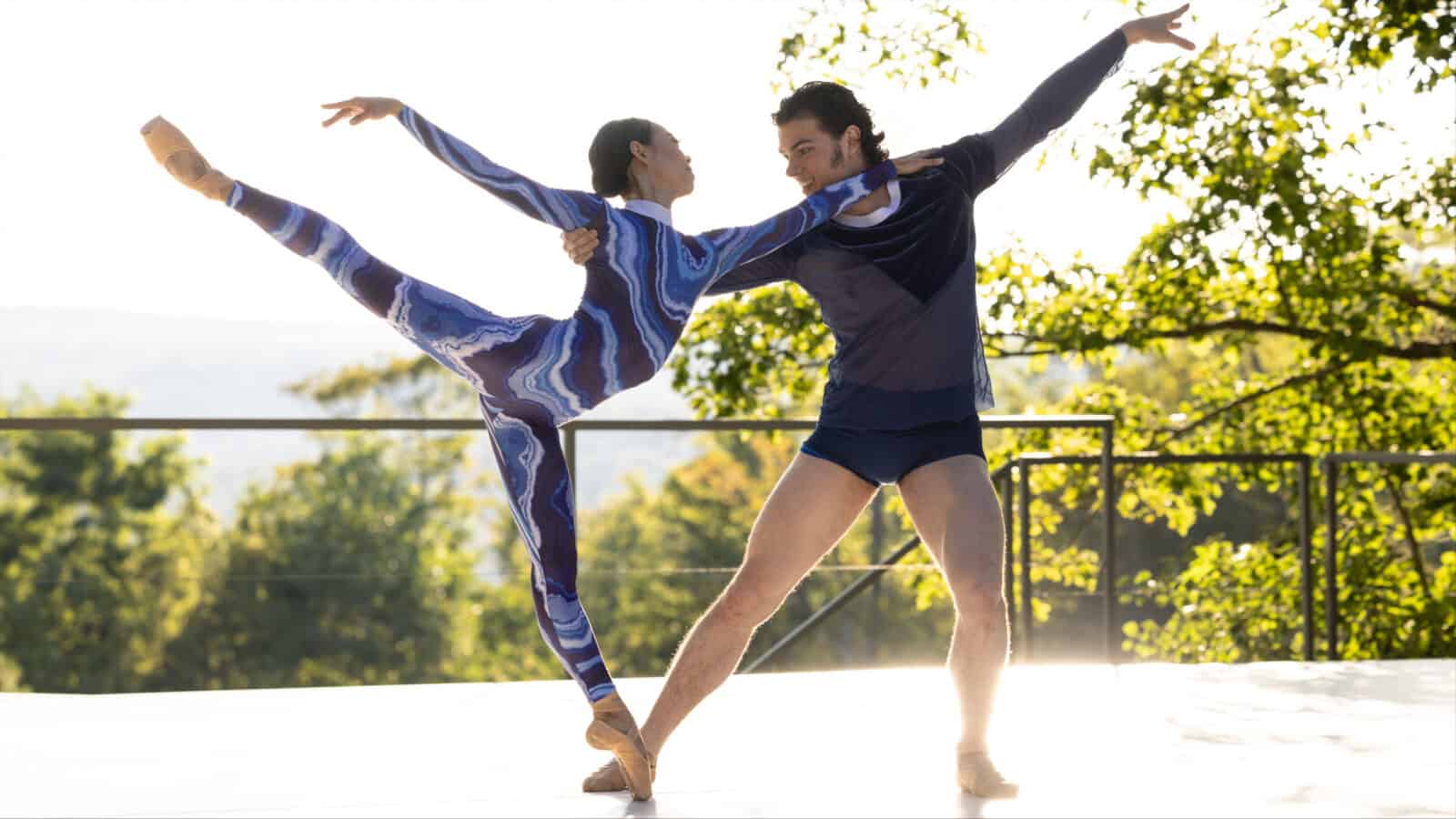
Dancers with the Tulsa Ballet perform on the outdoor stage at Jacob's Pillow. Press photo courtesy of Jacob's Pillow Dance Festival

